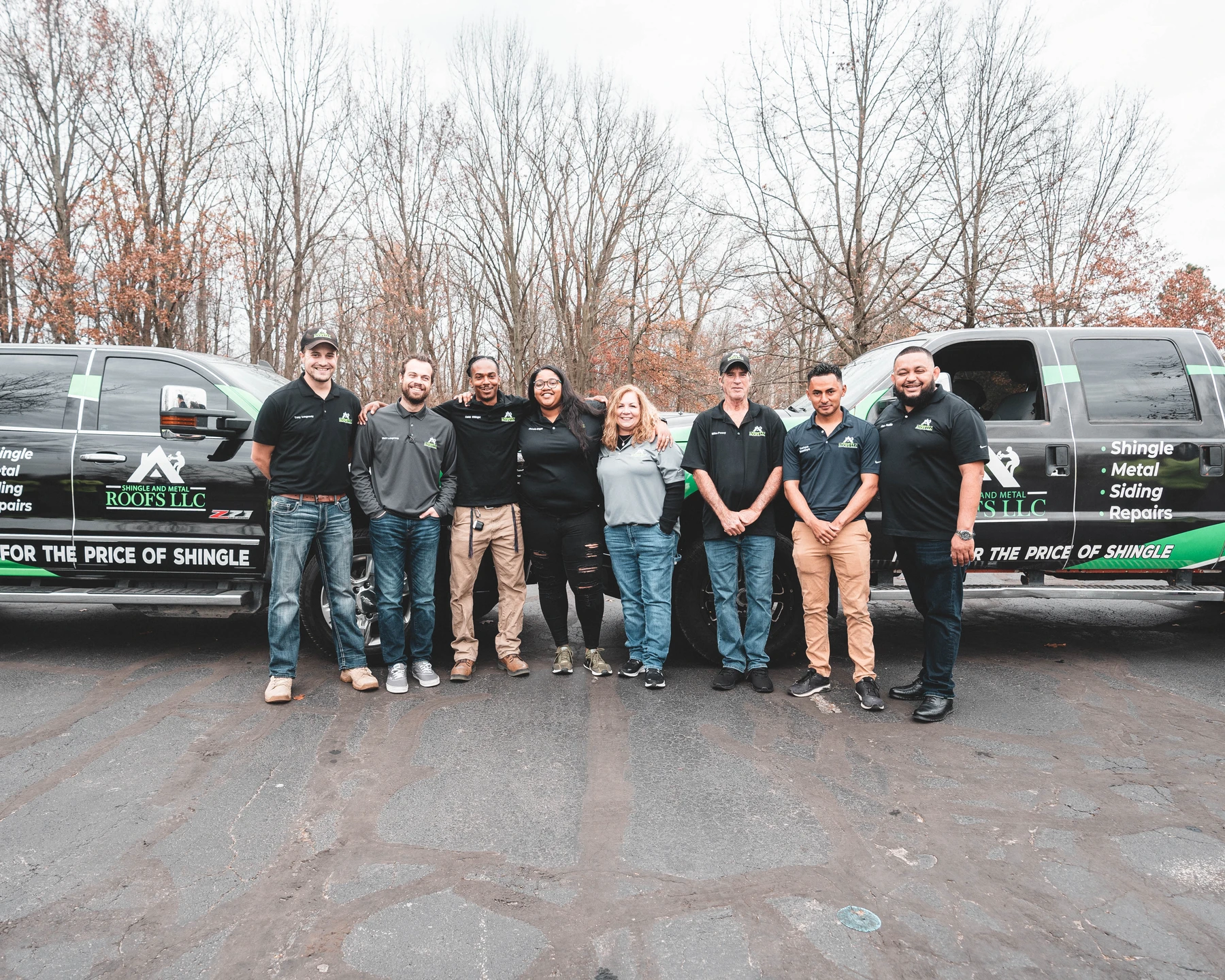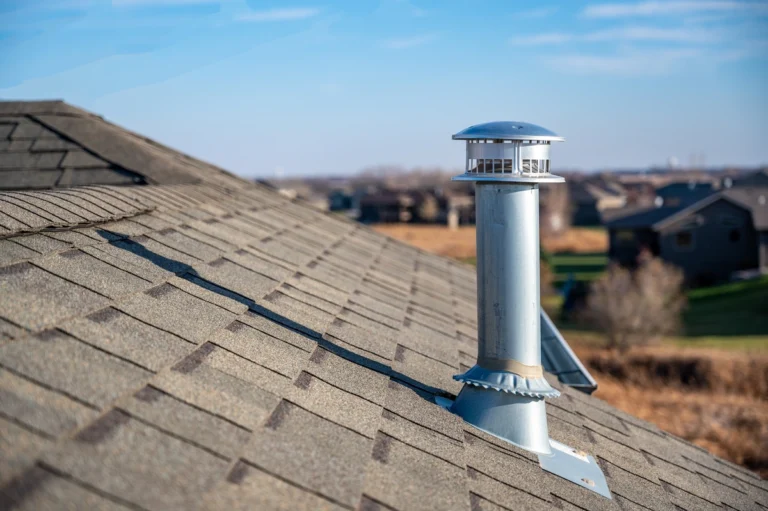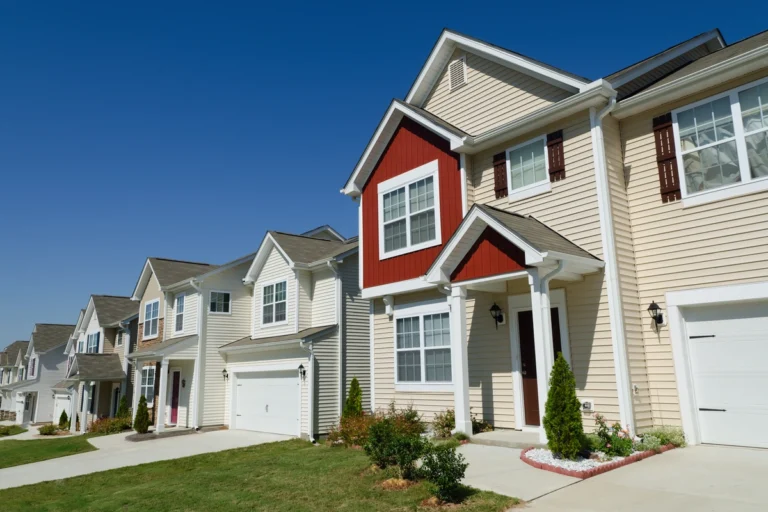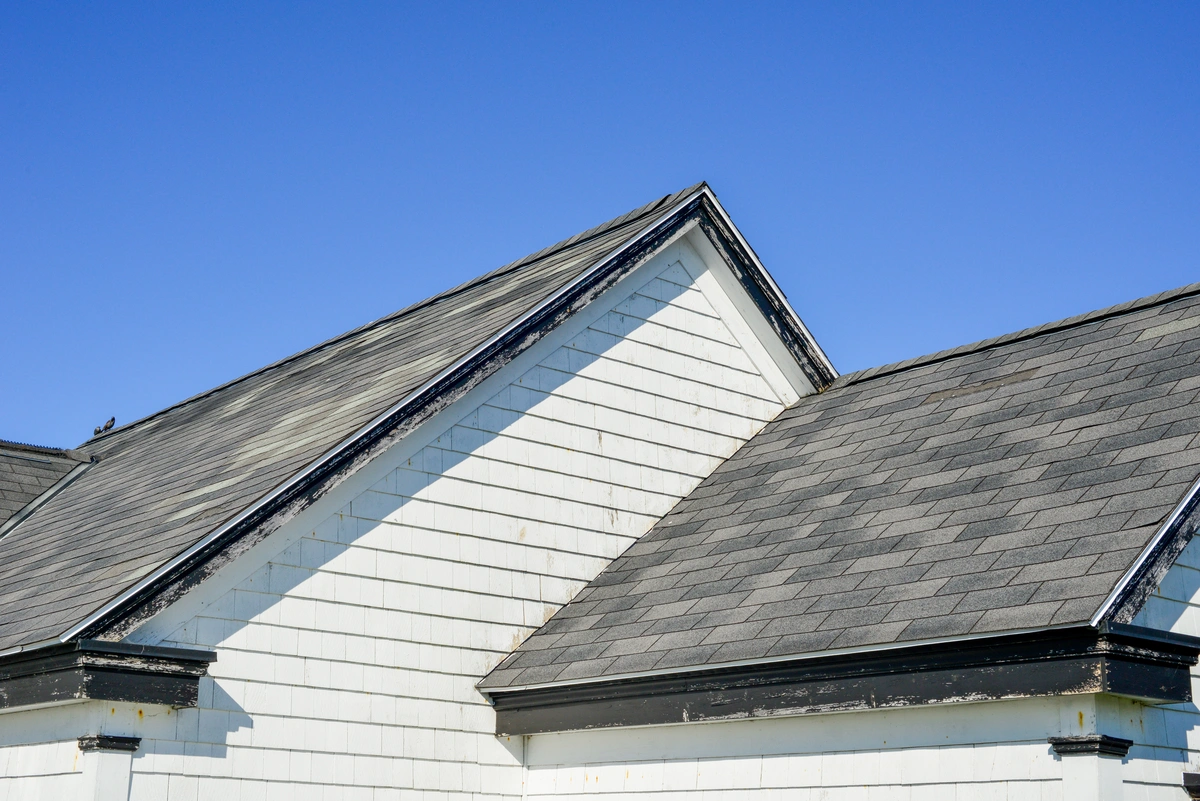
Are you a new or seasoned homeowner wondering “how old is my roof?” Knowing the age of your roof is crucial in determining when it may need repairs or even a complete replacement. As one of the most critical components of your home, maintaining its structural integrity should be a top priority.
We will explore the factors that can help you identify your roof’s age and specific indicators to watch for as it ages.
Key Takeaways
- Knowing the age of your roof is important for determining when it may need repairs or replacement to maintain its structural integrity.
- Top factors in identifying roof age include installation date, types of materials used, and weathering and wear.
- Signs of an aging roof include curling or buckling shingles, granule loss, and water stains or leaks.
- Accurately determining the age of your roof can involve contacting previous owners or inspecting it yourself, but we recommend a professional inspection from a licensed roofer for accuracy.
In some cases, this might not be possible; however, conducting an expert evaluation can still provide accurate estimates on your roof’s age and state. Regular maintenance checks by professionals will also ensure they promptly address signs of aging to prolong durability and maintain overall structural integrity.
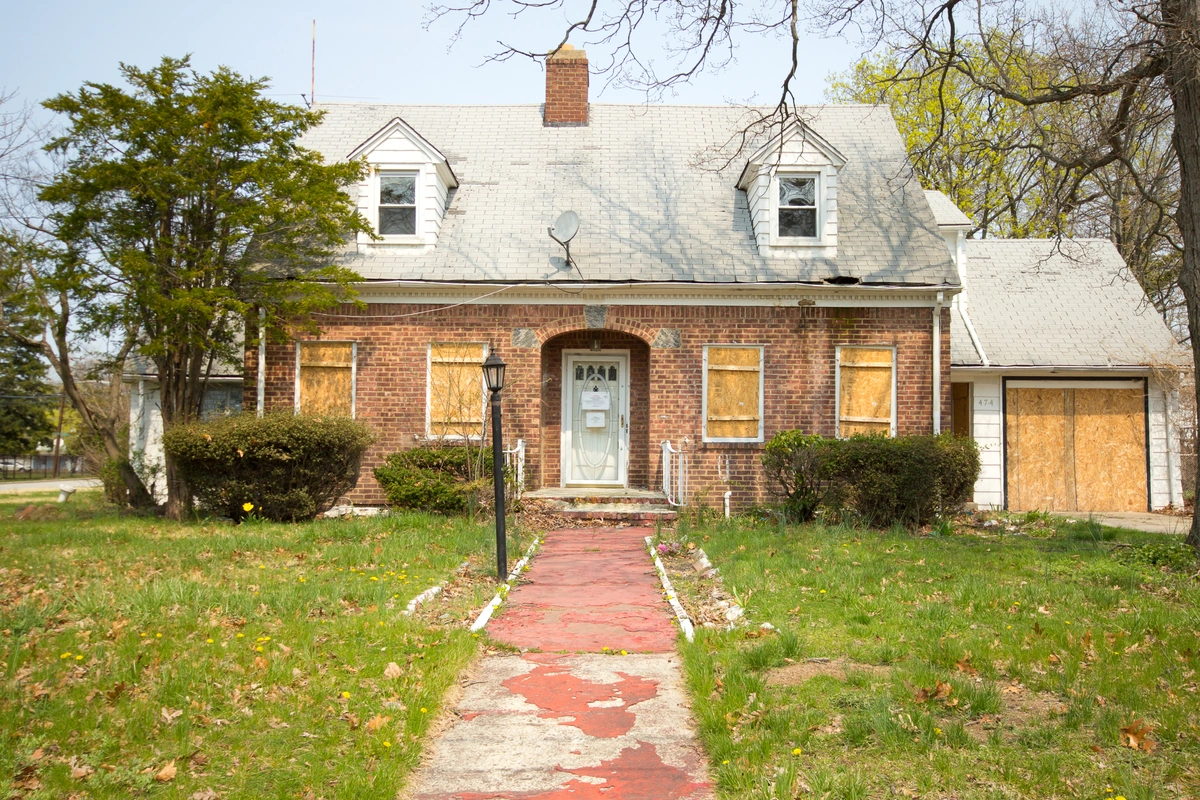
Top Factors To Identify Roof Age
Identifying the age of your roof depends on several factors, including installation date, types of materials used for roofing, and weathering and wear.
Installation Date
One of the primary factors in determining your roof’s age is finding out its installation date. Knowing when your roofer installed your roof can help you assess the remaining lifespan and understand the urgency for potential maintenance or replacement.
Obtaining a home inspection report, previous owner records or contacting the original roofing contractor could offer valuable information regarding your roof installation date.
Types of Materials
You can determine your roof’s age by examining the materials used in its construction. Different roofing materials have varying lifespans, affecting how long a roof can protect your home.
For instance, wood roofs can last up to 40 years if properly maintained, while dimensional asphalt shingle roofs typically endure around 27 years.
To accurately estimate your roof’s age based on its material type, consider consulting roofing industry standards or seeking an expert for guidance in assessing the condition of your specific material.
Additionally, local weather patterns could impact the longevity and overall wear of your chosen roofing material.
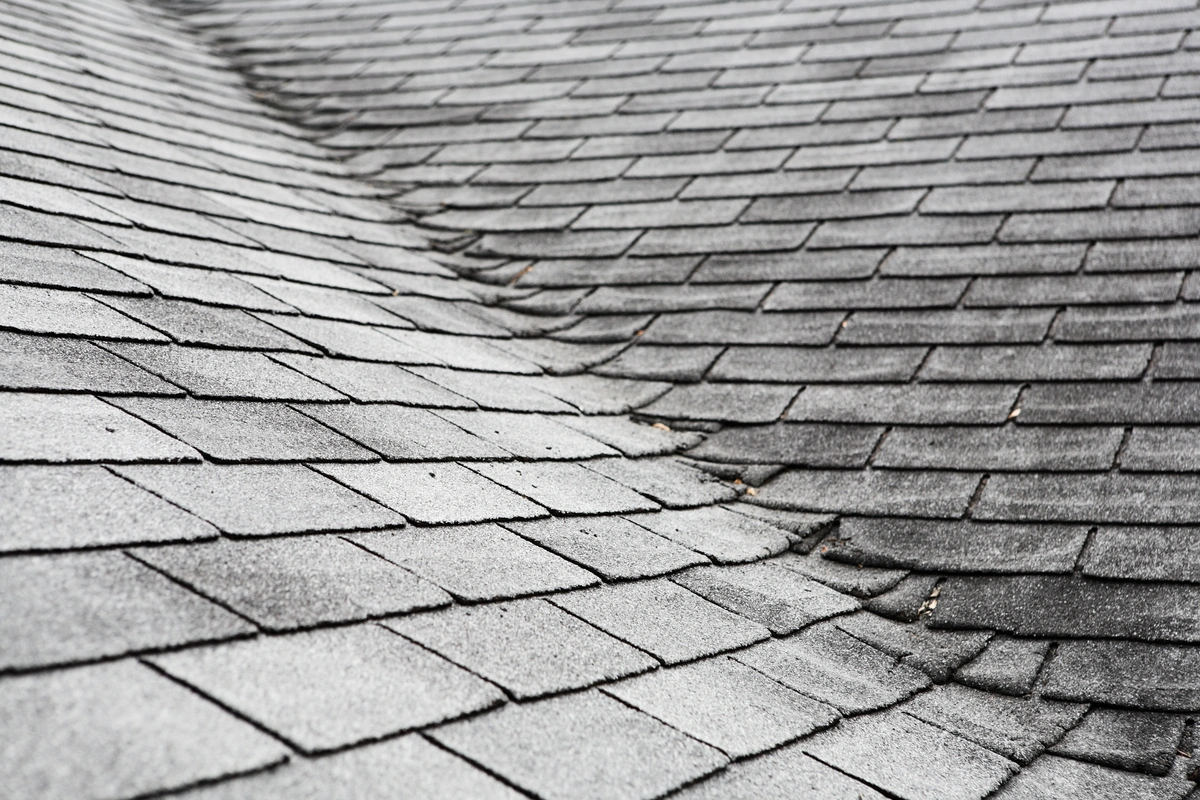
Weathering and Wear
Weathering and wear are crucial factors in determining the age of your roof, as they provide clear indicators of its overall condition. The cumulative effect of seasonal temperature fluctuations, precipitation, sunlight exposure, and other environmental elements can significantly impact a roof’s lifespan.
To assess weathering and wear on your roof effectively, conduct regular visual inspections for any noticeable signs such as cracks in shingles or tiles, loose flashing around vents or chimneys , faded paint on metal surfaces ,and algae growth on roofing materials.
Also consider historical weather data for your region to better understand how climatic conditions may have influenced the rate at which your roof has aged over time.
Signs of an Aging Roof
Curling or buckling shingles, granule loss, and water stains or leaks are all telltale signs that your roof may be aging and in need of repairs or replacement.
Curling or Buckling Shingles
One of the most noticeable signs of an aging roof is when shingles begin to curl or buckle. This can happen due to various reasons such as weather damage, age-related wear and tear and even human error during installation.
Curling or buckling is a common occurrence in asphalt shingles, usually indicating that the roof is between 12-15 years old. Once they start to curl or buckle, damaged shingles can lead to water leaks and other forms of structural damage if not addressed promptly.
So if you notice any curling or warping on your shingles, it’s advisable to have your roof inspected by a qualified roofing contractor who will advise you on whether it requires repair or replacement.
Granule Loss
Granules are small, sand-like particles that cover the surface of asphalt shingles. They protect the shingles from weather damage caused by UV rays and provide color to the roof.
Over time, granule loss occurs as a result of natural wear and tear.
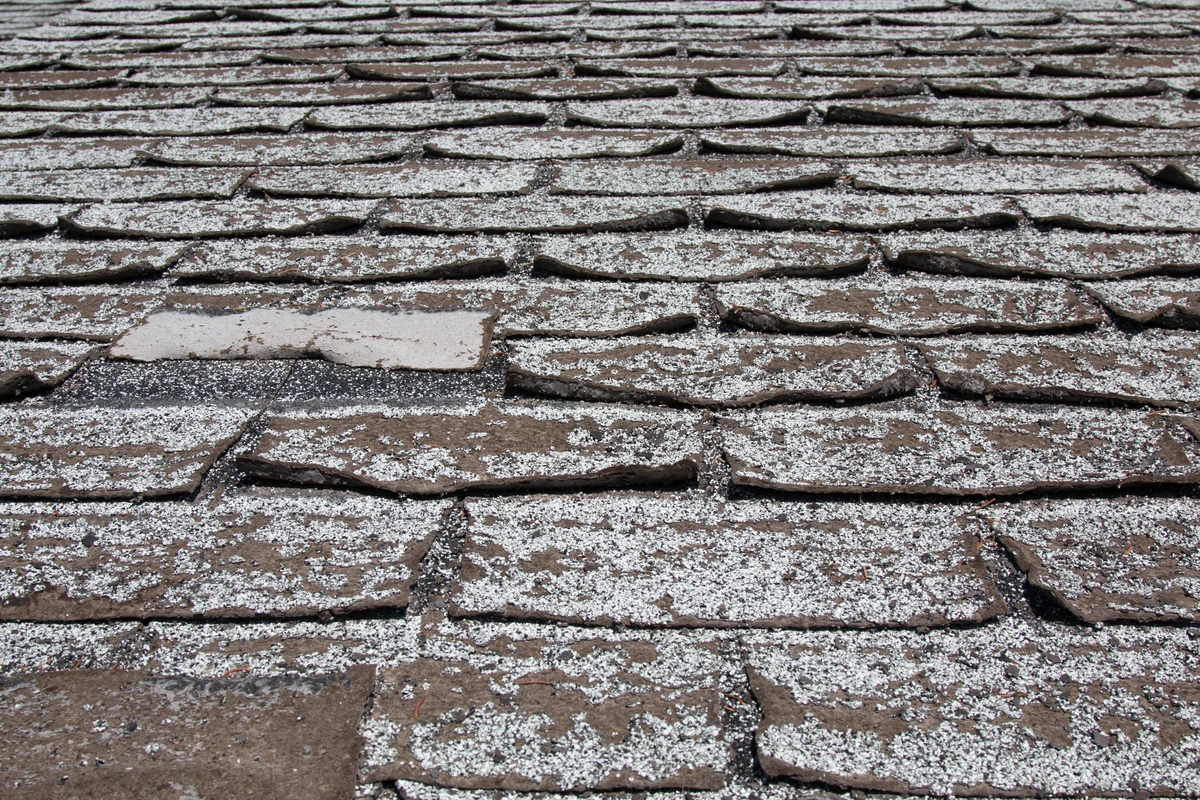
It’s important to keep an eye out for signs of granule loss because missing granules can increase the likelihood of weather damage, reducing the potential lifespan of the roof.
Additionally, if you notice significant granule loss on newer roofs, there might be manufacturing defects or installation errors at play which could affect your roofing warranty claim down the line.
Water Stains Or Leaks
Water stains on your ceiling or walls can often indicate a leaking roof, which is one of the top factors associated with an aging roof. Even a small leak can cause significant water damage to your home, leading to costly repairs and even mold growth if left untreated.
If you notice water stains or discoloration on the ceiling or walls of your home, it’s crucial to investigate the source of the problem right away before it causes more damage.
This may involve calling in a professional roofing contractor who can perform a thorough inspection and recommend repair options such as shingle replacement or repairing damaged flashing around chimneys or vents.
So… How Old Is My Roof?
If you’re unsure about the age of your roof, there are several ways to accurately determine it. One way is to find out when it was last replaced by contacting the previous owners or the roof replacement company.
You can also look for a building permit or request a copy of the receipt from the company that installed your current roof.
Another way to determine your roof’s age is by inspecting it yourself. Look for signs of damage such as curling shingles, buckling, blistering, and granule loss.
It’s important to know that different types of roofing materials have varying lifespans so make sure to do some research if you’re not sure how long yours should last.
By using these methods outlined above and paying attention to signs of an aging roof like those mentioned earlier – curling, buckling shingles etc., you’ll be able to accurately determine when it’s time for a new one.
Get In Touch With The Pros
Knowing the age of your roof is vital for ensuring its longevity and avoiding costly repairs or replacements. By considering installation date, roofing material, weathering and wear, it’s possible to accurately determine how old your roof really is.
Signs of an aging roof such as curling shingles or water leakage can also provide clues about its age. Schedule a professional inspection with Shingle & Metal Roofs today for a more accurate determination!

